Getting Around, Cusco Travel, Transport and Car Rental
(Cusco / Cuzco, Peru)
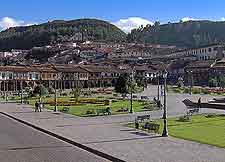
Central Cusco is relatively compact and easy enough to travel around on foot. However, if you are looking to travel far, then it is likely that you will need to use bus transport or taxis, particularly if you are heading to Cusco's airport, or to the remains of the
Saqsaywaman fortress or the Phuyupatamarca complex.
If you have chosen to stay in Cusco for any length of time, then 'combis' tend to be the most suitable form of transport, being especially favoured by backpackers. Combis are small buses or vans and travel to many places of interest around the city, running as late as 22:00 and often becoming rather crowded.
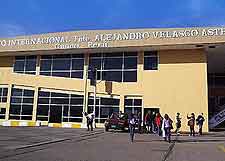
Alejandro Velasco Astete International Airport (CUZ) / Arriving by Air
Located just a relatively short distance to the south of central Cusco, the Alejandro Velasco Astete International Airport serves the south-eastern Peru well, where it regularly receives daily flights from all over the country and a limited number of international destinations, including Bolivia. Domestic flights are operated by airlines such as LAN, TACA and Star Peru, and travel to the cities of
Arequipa,
Juliaca,
Lima, Puerto Maldonado and also Tacna. Be warned, flights at Alejandro Velasco Astete Airport are notoriously overbooked and you should confirm your flight well in advance, and then again 24 hours before departure, checking in as early as you can. Most flights take place in the morning, due to favourable climatic conditions. If you are flying from Cusco to Lima, do try to get a window seat on the right-hand side of the aircraft, so that you can enjoy the views of the Nevado Salcantay mountain peak, although occasionally planes actually fly over
Machu Picchu.
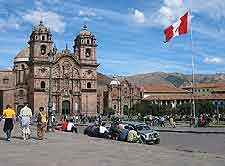
Car Rental
Renting a car in Peru is only for the bravest of drivers, since the roads are notoriously dangerous, dusty and uneven, with a number of potential hazards, although in recent years, many of the busiest roads have now been repaved. Therefore, many visitors to Cusco are now choosing to hire a taxi for the day or longer, allowing you to travel outside of the city and explore elements of south-eastern
Peru a little more easily, at your own pace. This luxurious mode of transport is quite affordable, although more expensive than public transportation. Motorcycle rentals are also available is required.
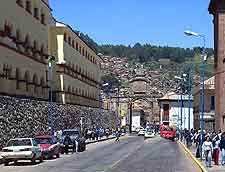
Buses and Coaches
Almost all tourists staying in Cusco will likely use the city's extensive bus transport at some time. The main long-distance bus terminal in Cusco is known as the 'Terminal Terrestre' and is located approximately 2 km / 1 mile to the south-east of the Plaza de Armas, and just a short walk from the Avenida El Sol. A mixture of different bus companies operate here, ranging from the fairly luxurious Cruz del Sol, Inka Express (complete with panoramic windows) and also Ormeno, to more basic, economy bus transport. Buses from Cusco regularly travel to Peruvian destinations such as Abancay, Abra la Raya, Andahuaylillas, Arequipa, Chinchero, Lima, Limatambo, Nazca, Ollantaytambo, Piquillacta, Pucara, Puno, Quillabamba, Pisac, Raqchi, Rumicola, Tipon, Urcos and Urubamba.
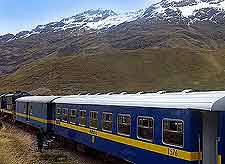
Trains
There are no less than two individual train stations to be found within Cusco. The Estacion Huanchac (Huanchac Train Station) is sited on the far side of the Avenida El Sol close to the Waterfall Monument and the Centro Artesanal shopping centre. Frequent trains travel from the Estacion Huanchac to Juliaca, Puno and
Lake Titicaca. Near to the Mercado Central and on the south-westerly side of central Cusco, the Estacion San Pedro (San Pedro Train Station) serves both Machu Picchu (Aguas Calientes) and also Ollantaytambo, within the
Sacred Valley of the Incas.
Taxis
Taxi transport is especially commonplace in the city and most suitable for just short journeys. Try to agree a fixed price before you depart and don't be afraid to haggle a little. Official taxis should always be used, and any cab without an illuminated taxi sign on the roof should be avoided.
 Central Cusco is relatively compact and easy enough to travel around on foot. However, if you are looking to travel far, then it is likely that you will need to use bus transport or taxis, particularly if you are heading to Cusco's airport, or to the remains of the Saqsaywaman fortress or the Phuyupatamarca complex.
Central Cusco is relatively compact and easy enough to travel around on foot. However, if you are looking to travel far, then it is likely that you will need to use bus transport or taxis, particularly if you are heading to Cusco's airport, or to the remains of the Saqsaywaman fortress or the Phuyupatamarca complex.



